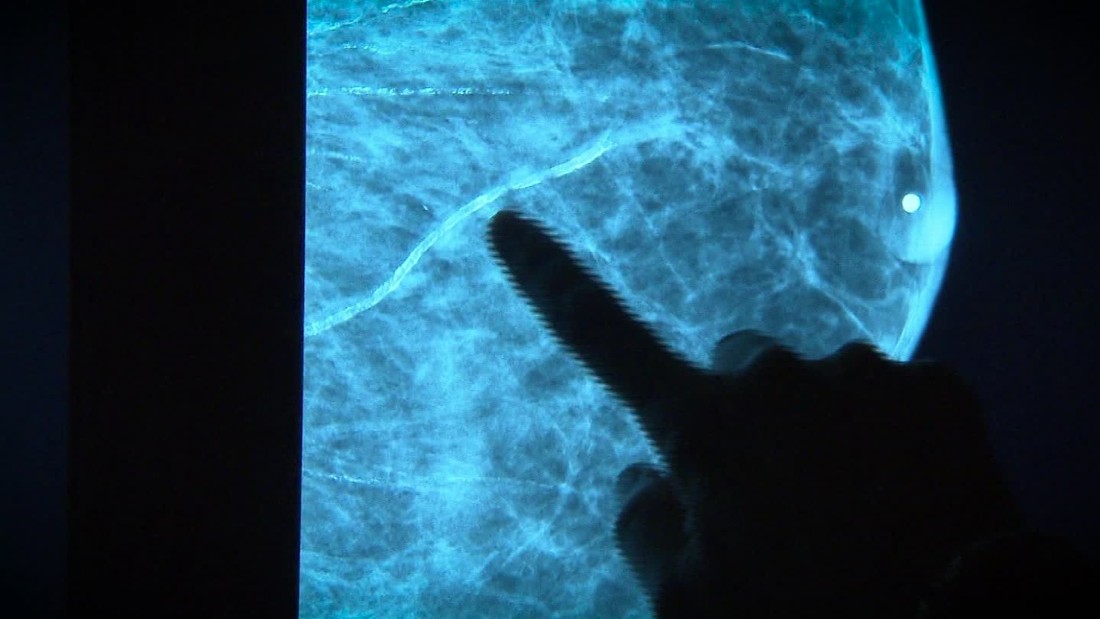Cancer screening tests drop notably 4:13
(CNN Spanish) -
October 19 marks the International Breast Cancer Day.
According to data from the World Health Organization, this is one of the types of cancer that generates the most deaths around the world,
What are the five deadliest cancers in the world?
Here are some of its characteristics and symptoms.
1. Lung cancer
According to the WHO, 1.76 million people died in 2018 from lung cancer.
Its most common cause is cigarette smoking, generating about 90% of deaths from this condition.
Cigarette smoking causes more than 480,000 deaths each year in the United States alone, or almost one in five deaths, according to the Centers for Disease Control and Prevention, CDC.
Male smokers are 25 times more likely to develop lung cancer than non-smokers, while women are 25.7 times more likely, according to the CDC.
advertising
Symptoms
This type of cancer has few symptoms in the early stage.
However, later on, the disease manifests itself with:
frequent cough
chest pain
difficulty breathing
wheezing
repeated episodes of pneumonia or bronchitis
hoarseness
coughing up with excess mucous and bloody or rust-colored phlegm
One way to prevent this cancer is to avoid smoking or secondhand smoke.
2. Colorectal cancer
Colorectal cancer affects the lower intestinal portions of the digestive system, colon and rectum and, in 2018, it claimed the lives of 862,000 people, according to the WHO.
Tumors can develop anywhere in the colon or rectum.
If colorectal cancer cells spread outside of the colon or rectum, they often travel to nearby lymph nodes (sometimes called lymph glands).
Colorectal cancer can also spread to other parts of the body, especially the liver, and sometimes to the lungs, bones, and other organs.
Symptoms
Symptoms of colorectal cancer include:
Diarrhea or constipation
Feeling that the intestine is not emptying completely
Blood in the stool
Frequent gas pains or cramps
Weight loss for no known reason
Fatigue
Nausea or vomiting
The risk of developing colorectal cancer is strongly related to family history.
Compared to the general population, people with a family history of colorectal cancer face approximately twice the risk of developing the disease.
Most colorectal cancer patients over the age of 50 are diagnosed in the early stages of the disease.
But a 2019 American Cancer Association study revealed that the majority of younger cancer patients and survivors, 71%, said they were diagnosed in advanced stages 3 and 4.
The American Cancer Society updated its colorectal cancer screening guidelines in 2018 to recommend that average-risk adults be screened starting at age 45 rather than age 50, as advised above.
Screening options can range from having a highly sensitive stool test annually to having a colonoscopy every 10 years.
Colorectal cancer is highly treatable if caught early.
Tests can detect precancerous growths and remove them.
Treatment for this type of cancer includes surgery, radiation therapy, and chemotherapy.
Cancer and Parkinson's disease weakened Powell and when he became infected with covid-19 he died, says Dr. Huerta
3. Stomach cancer
Gastric cancer occurs when cancer cells form in the lining of the stomach.
In 2018, 783,000 people died worldwide from this type of cancer.
"Risk factors include smoking, infection with the H. pylori bacteria, and certain inherited conditions," says the National Cancer Institute.
There are several types of stomach cancer that tend to develop over a period of several years, says the American Cancer Society (ASC).
He points out that before true cancer forms, "precancerous" changes often occur in the lining of the stomach.
As cancer tumors in the stomach can develop in different sections of this organ, the location of cancer cells can cause treatments to vary.
Symptoms
According to the American Cancer Society, symptoms include:
Lack of appetite
Weight loss (without trying)
Abdominal (belly) pain
Vague discomfort in the abdomen, usually above the navel
A feeling of fullness in the upper abdomen after eating a small meal
Heartburn or indigestion
Sickness
Vomiting, with or without blood
Swelling or fluid buildup in the abdomen
Blood in the stool
Low red blood cell count (anemia)
4. Liver cancer
This type of cancer caused 782,000 deaths worldwide in 2018, according to the WHO.
The liver is also susceptible to cancer of other organs metastasizing or spreading, especially colorectal cancer.
According to the American Cancer Association, the "best option" to cure liver cancer is to remove the cancerous tumor with surgery or a liver transplant, and smaller liver cancers can also be treated with other types of treatment such as ablation or radiation.
Symptoms
Symptoms include:
Unexplained weight loss
Fatigue
Feeling full after a small meal
Lack of appetite
Persistent abdominal pain
Swelling of the stomach area
Yellow discoloration of the skin and eyes
Mass that can be felt in the liver
Treatments to treat liver cancer include surgery, ablation, embolization therapy, radiation therapy, immunotherapy, and chemotherapy, among others.
Cancer patients against covid-19 5:01
5. Breast cancer
Breast cancer is the most common type for women in 154 of the 185 countries in a 2018 study from the WHO International Agency for Research on Cancer.
It represents 15% of all female cancers, according to the WHO.
In 2018, 627,000 deaths were registered from this type of cancer, according to the organization.
About one in four new cases of cancer diagnosed in women worldwide occurs in the breast.
If caught early, breast cancer can be a manageable disease.
But it remains the leading cause of cancer death in women, followed by lung, colorectal and cervical cancer.
Breast cancer survival rates range from 80% in North America to less than 40% in low-income countries.
This is mainly due to the lack of screening programs.
Breast cancer: "Detected early, in 90% of cases it is curable"
Breast cancer in men is less common than in women.
According to a study by the American Cancer Society, the absolute risk of a man developing cancer is 1 in 833, while for women it is 1 in 8.
However, although this disease is rare in men, statistics show that it is on the rise.
In 2019, the Society estimates that 2,670 new cases were diagnosed in men and approximately 500 deaths.
In 1991 there were only 900 cases of invasive breast cancer in men.
Symptoms
According to the CDC, some warning signs of breast cancer are:
A new lump in the breast or armpit (under the arm)
Increased thickness or swelling of part of the breast
Irritation or sagging of the skin of the breast
Redness or peeling in the nipple or breast area
Sagging of the nipple or pain in that area
Nipple discharge, other than milk, even blood
Any change in the size or shape of the breast
Pain in any part of the breast
CancerInstaNews














